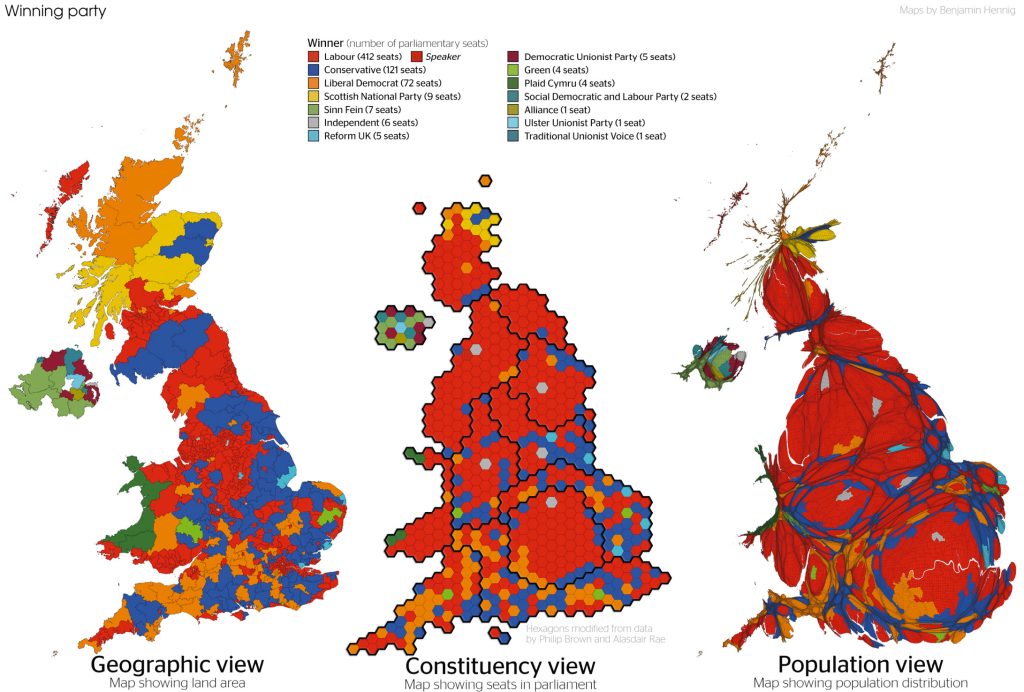
Prof Daniel Jackson
Professor of Media and Communications at Bournemouth University.
Prof Katy Parry
Professor of Media and Politics at the University of Leeds.
Dr Emily Harmer
Senior Lecturer in Media and founding Co-Director of DigiPol at the University of Liverpool.
E.Harmer@liverpool.ac.uk
Twitter: @Harm365
Prof Darren Lilleker
Professor of Political Communication, Bournemouth University.
Prof Scott Wright
Deputy Dean in the Faculty of Media and Communication and Professor of Political Communication and Journalism
Prof Julie Firmstone
Professor of Journalism and Political CommunicationSchool of Media and Communication, University of Leeds
Prof Einar Thorsen
Executive Dean of the Faculty of Media and Communication, Professor of Journalism and Communication at Bournemouth University
After months of speculation about the timing of the next general election, Rishi Sunak surprised many by plumping for July and announcing the news during a rainstorm, apparently signaling the campaign difficulties ahead for his Conservative Party. Labour’s substantial lead in the polls leading to and throughout the campaign led to an unsurprising landslide for Keir Starmer’s party, gaining 411 seats to the Conservative Party’s 121. Given the perceived inevitability of the result, it might be tempting to suggest that the campaign made no difference. Still, the mid-campaign rise of Reform UK and the election of multiple independent candidates in previously safe seats could challenge such a reading.
While the election of a Labour government was not unexpected, there were plenty of noteworthy results for other parties (covered more fully by our contributors), including the rebound of the Liberal Democrats, the SNP collapse, and the aforementioned rise in successful independents and Reform UK candidates. The results also proved favourable for smaller parties like the Green Party, which increased its seats from one to four. Election night also brought drama, with several prominent Conservatives losing their seats, including former Prime Minister Liz Truss.
This election has prompted many questions and talking points, which pollsters, journalists, academics, commentators, and politicians are now busy analysing. This report is our collective contribution to making sense of the 2024 election. To do this, we have again turned to leading academics in the UK and beyond – a mix of established experts and early-career researchers – to offer their reflections, analysis, and preliminary findings on the election campaign.
For analysts, this election offered continuities from recent campaigns but will also be remembered for its implications for democracy and representation. Much of the post-election analysis has focussed on the size of the Labour majority versus its share of the vote, with increasing calls for a more proportional electoral system. Accordingly, we devote Section 1 to discussions of the performance of the electoral system alongside wider reflections on the status of the UK’s democratic culture.
In Section 2, we turn to voters, polls, and results. At 60%, turnout was the lowest since 2001, indicating that politicians of all parties have much work to do in rebuilding trust with voters. Chapters of this report unpack the causes and consequences of this, alongside analysis of age, gender, and religion as important factors in voting patterns and electoral outcomes. This was also an election where tactical voting likely played a crucial role in the outcome of certain seats, to the benefit of the progressive Left.
After a series of disastrous elections for Labour in Scotland, 2024 saw a remarkable reversal of their fortunes north of the border. Section 3 discusses how we got here and its implications. Wales remained red, but as with other nations and regions, Labour’s future is still uncertain.
With new parties launched, remarkable changes in fortunes from 2019, and a notable number of independent candidates returned, there is much to unpack for the UK’s political parties (Section 4). Of relevance here are the policy platforms on which the parties campaigned (Section 5). Compared to 2017 and 2019, Brexit was relatively absent, with both major parties campaigning around tax, the economy, public services, and the cost of living. Despite the campaign seemingly being called to benefit their Rwanda policy, the Conservatives remained relatively quiet on immigration, allowing Reform to dominate this space.
Digital media (Section 6) was again a major battleground, where for the first time a UK general election was fought in light of generative AI, which proved a talking point for our contributors. 2024 also saw TikTok emerge as a significant platform for reaching younger voters, though contributions also demonstrate how Facebook and other established social networks remained relevant.
Since the time of Gordon Brown’s leadership, the Labour Party has routinely faced hostility from the UK’s predominantly right-wing press. The evidence gathered in Section 7 of this report from 2024 suggests that Labour was given a far greater hearing. However, the nature of press endorsements suggest that any hopes of sympathetic coverage will be short-lived. 2024 also saw televised leader debates further established as a central staple of election communication in the UK. However, given the public dissatisfaction with some of the debate formats and the emergence of an increasingly multi-party system, they remain a work in progress.
Finally, in Section 8 we capture perhaps one of the most interesting dynamics of the election: the interplay between politics, performance and popular culture. Here, contributions explore the sounds, iconic images, mood, and feel of the election as voters experienced it, particularly outside of explicitly political places and spaces.
Published within ten days of the result, these contributions are short and accessible. Authors provide authoritative analysis – including research findings and new theoretical insights – to bring readers original ways of understanding the campaign. Contributions also benefit from a rich range of disciplinary influences, from political science to cultural studies, journalism studies to geography. We hope this makes for a vibrant, informative, and engaging read.

